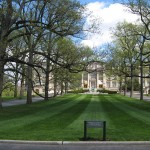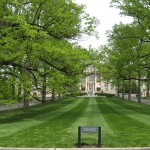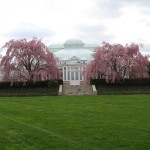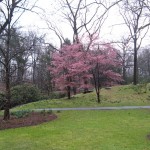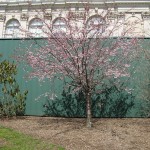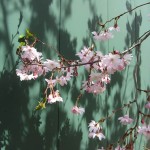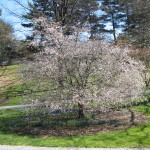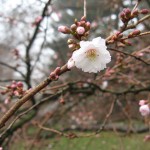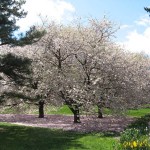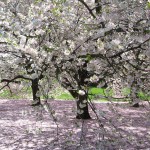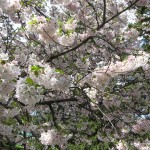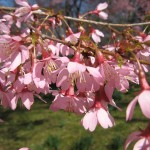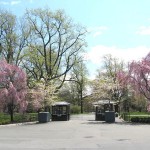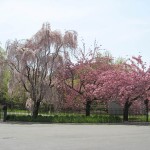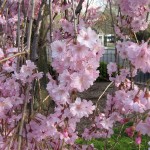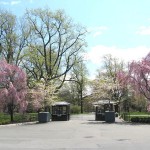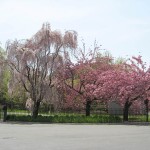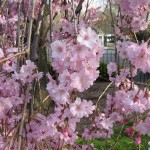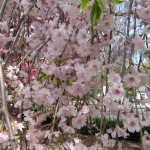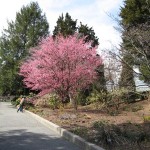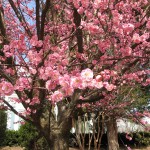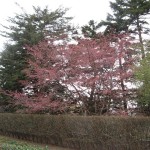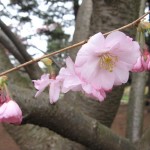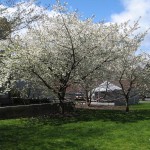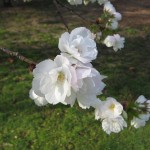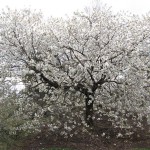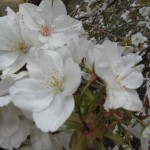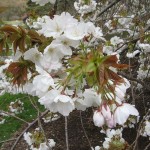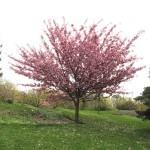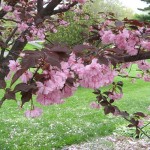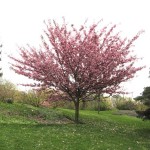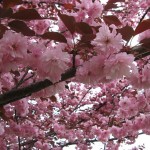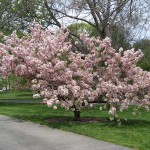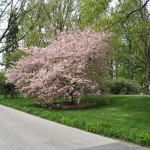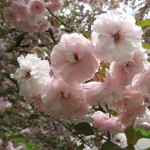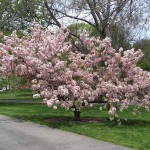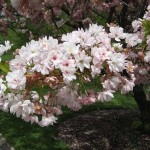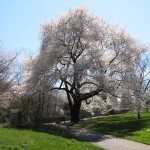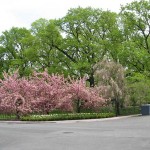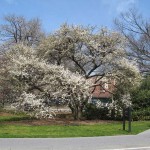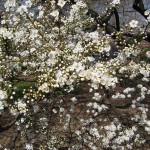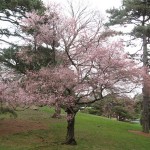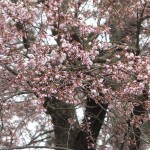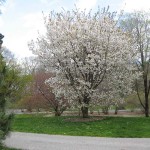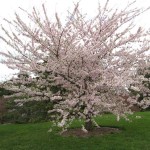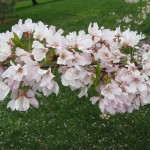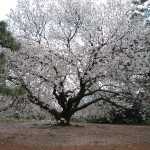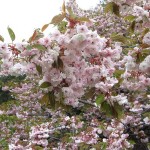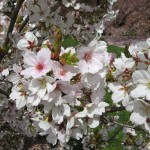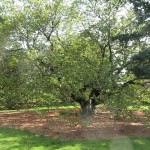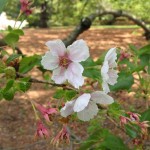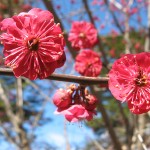CHERRIES AT THE NYBG
Flowering Cherries photographed at the New York Botanical Garden during April.
There are at least 7 ways to learn to recognize these flowering cherries at the Garden.
1. Phenology: The Okame cherry always flowers before the Yoshino which flowers before the Kanzan.
Whether it’s an early spring or a late spring, the sequence of cherries usually stays the same.
2. Habit: A few cherries, but by no means all, have a distinctive growth habit. The weeping cherry is an example.
3. Petal number: Count the petals and you’ll find the flowering cherries fall into 3 basic groups – those with 5 petals, those with 10-12 or so petals, and those with more than 20 petals.
4. Flower texture. Some cherries have very thin petals, like the autumn cherry, while others, like the shirotae have thick almost sheet-like petals.
5. Flower color change: Some cherries have flowers that change color as the flowers age. Shiro-fugen, for example, starts out white and becomes pink (and certainly so once the flowers fall).
6. Flower fall: Some cherries lose their petals one at a time; others drop their flowers essentially intact.
7. Leaf edge and leaf color: The leaves of flowering cherries can often be divided into two groups – one group has edges appearing awl-toothed. Some cherries have leaves that are red rather than green when they’re young.
- weeping cherry
- weeping cherry (left), autumn cherry (right)
- Okame cherry
- autumn cherry
- autumn cherry
- hally jolivette
- hally jolivette
- yoshino cherry
- yoshino cherry
- yoshino cherry
- Okame cherry
- weeping cherry
- weeping cherry
- weeping cherry
- Prunus mume (Japanese apricot, Chinese plum)
- Prunus mume (Japanese apricot, Chinese plum)
- Prunus mume (Japanese apricot, Chinese plum)
- accolade
- accolade
- shirotai
- shirotai
- rosy cloud
- rosy cloud
- uzuzakura
- uzuzakura
- uzuzakura
- Royal Burgundy
- Royal Burgundy
- Royal Burgundy
- Royal Burgundy
- Shiro-fugen
- Shiro-fugen
- Bennishi
- Bennishi
- Prunus pendula 'ascendens'
- Kanzan
- Prunus sodgiana
- Prunus sodgiana
- fukubana
- fukubana
- tai-haku
- afterglow
- afterglow
- Prunus sp.
- Prunus sp. (B)
- Prunus sp. (B)
- Prunus sp. (C)
- Prunus sp. (C)
- Prunus sp. (D)
- Prunus sp. (D)
- kanzan (photo from Central Park)
- Prunus mume 'Matsurabara Red'
The Okame is the first of the springtime cherries to flower at the Garden. The Autumn cherry usually flowers in December-January, and then again in the spring. The Hally Jolivette typically flowers in the spring but sometimes overwinter. The Prunus mume (Japanese apricot or Chinese plum) flowers anytime from mid-March to early April in the Ladies’ Border. The Okame usually flowers by the vernal equinox and begins the parade of the flowering cherries at the Garden.



